-
 Bitcoin
Bitcoin $104,726.7569
1.64% -
 Ethereum
Ethereum $2,498.7221
-2.84% -
 Tether USDt
Tether USDt $1.0006
0.04% -
 XRP
XRP $2.1735
0.55% -
 BNB
BNB $646.1374
-0.92% -
 Solana
Solana $149.9892
0.67% -
 USDC
USDC $0.9998
-0.02% -
 Dogecoin
Dogecoin $0.1795
0.23% -
 TRON
TRON $0.2773
1.50% -
 Cardano
Cardano $0.6656
0.97% -
 Hyperliquid
Hyperliquid $34.2378
1.08% -
 Sui
Sui $3.1670
3.57% -
 Chainlink
Chainlink $13.5178
0.00% -
 UNUS SED LEO
UNUS SED LEO $9.0231
2.03% -
 Avalanche
Avalanche $19.5829
-0.30% -
 Stellar
Stellar $0.2642
0.86% -
 Bitcoin Cash
Bitcoin Cash $396.9586
-0.12% -
 Toncoin
Toncoin $3.1464
-1.41% -
 Shiba Inu
Shiba Inu $0.0...01251
-0.40% -
 Hedera
Hedera $0.1656
0.67% -
 Litecoin
Litecoin $86.6370
0.15% -
 Polkadot
Polkadot $3.9270
-0.85% -
 Monero
Monero $323.6381
2.68% -
 Ethena USDe
Ethena USDe $1.0013
0.05% -
 Bitget Token
Bitget Token $4.6330
0.97% -
 Dai
Dai $0.9998
0.01% -
 Pepe
Pepe $0.0...01110
-1.90% -
 Pi
Pi $0.6228
0.49% -
 Aave
Aave $252.7413
-0.44% -
 Uniswap
Uniswap $6.0759
-1.66%
How to adjust the price oscillator parameters? Short-term cycle selection
Adjust price oscillator for short-term cycles by setting fast MA to 5-20 periods and slow MA to 10-50 periods; fine-tune for optimal trading signals.
Jun 02, 2025 at 10:57 pm
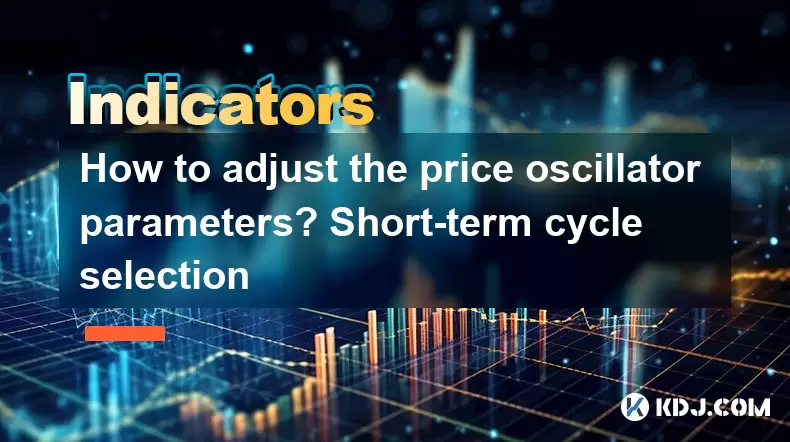
How to Adjust the Price Oscillator Parameters? Short-Term Cycle Selection
The price oscillator is a valuable tool for traders in the cryptocurrency market, helping them identify potential buy and sell signals by measuring the difference between two moving averages. Adjusting the parameters of a price oscillator, particularly for short-term cycles, can significantly impact its effectiveness. This article will guide you through the process of adjusting the price oscillator parameters for short-term cycle selection, ensuring you can optimize your trading strategy.
Understanding the Price Oscillator
Before diving into adjusting the parameters, it's essential to understand what a price oscillator is and how it functions. The price oscillator calculates the difference between two moving averages of a security's price. Typically, these are a fast moving average and a slow moving average. The difference is then plotted as a line or histogram, which oscillates around a zero line.
The fast moving average typically covers a shorter period, making it more sensitive to recent price changes. The slow moving average covers a longer period, smoothing out short-term fluctuations. The difference between these two averages can help traders identify trends and potential reversal points.
Selecting Short-Term Cycles
When focusing on short-term cycles, traders aim to capture quick price movements and capitalize on short-lived trends. The key to adjusting the price oscillator for short-term cycles lies in selecting the appropriate periods for the fast and slow moving averages.
For short-term trading, the fast moving average period should be relatively short, often ranging from 5 to 20 periods. The slow moving average period should be longer but still within the short-term range, typically between 10 to 50 periods. The exact numbers can vary based on the specific cryptocurrency and market conditions.
Adjusting the Fast Moving Average
To adjust the fast moving average for short-term cycles, follow these steps:
- Open your trading platform and navigate to the chart of the cryptocurrency you are analyzing.
- Select the price oscillator indicator from the list of available technical indicators.
- Locate the settings for the fast moving average. This is usually labeled as "Fast MA Period" or something similar.
- Enter a value between 5 and 20. For example, if you want to be more responsive to recent price changes, you might choose 5. If you want a bit more stability, you might choose 10 or 15.
- Apply the changes and observe how the oscillator reacts to the new setting.
Adjusting the Slow Moving Average
Adjusting the slow moving average involves similar steps:
- Navigate to the settings for the slow moving average. This is typically labeled as "Slow MA Period".
- Enter a value between 10 and 50. For a more sensitive oscillator, you might choose 10. For a smoother oscillator, you might choose 30 or 40.
- Apply the changes and monitor the oscillator's behavior on the chart.
Fine-Tuning the Oscillator
After setting the initial periods for the fast and slow moving averages, you may need to fine-tune the oscillator to better suit your trading style and the specific cryptocurrency you are trading. Here are some tips for fine-tuning:
- Experiment with different combinations of fast and slow moving average periods. For example, try a fast MA of 5 and a slow MA of 10, then adjust to a fast MA of 10 and a slow MA of 20, and observe the differences.
- Monitor the oscillator's sensitivity. If the oscillator is too sensitive and generates too many false signals, increase the slow MA period. If it's not sensitive enough, decrease the slow MA period or increase the fast MA period.
- Use historical data to backtest your settings. Many trading platforms allow you to apply the oscillator to historical data and see how it would have performed with different settings.
Interpreting the Price Oscillator
Once you have adjusted the price oscillator parameters for short-term cycles, it's crucial to understand how to interpret the signals it provides. Here are some key points to consider:
- Crossovers: When the price oscillator crosses above the zero line, it can signal a potential buy opportunity, indicating that the short-term trend is turning bullish. Conversely, when it crosses below the zero line, it can signal a potential sell opportunity, indicating a bearish turn.
- Divergence: If the price of the cryptocurrency is making new highs while the oscillator is not, this can signal a bearish divergence and a potential reversal. Similarly, if the price is making new lows while the oscillator is not, this can signal a bullish divergence.
- Overbought and Oversold Conditions: Some traders use the price oscillator to identify overbought and oversold conditions. If the oscillator reaches extreme highs, it may indicate overbought conditions, suggesting a potential sell. If it reaches extreme lows, it may indicate oversold conditions, suggesting a potential buy.
Applying the Price Oscillator in Trading
To effectively apply the price oscillator in your trading strategy, consider the following steps:
- Combine with other indicators: The price oscillator can be more effective when used in conjunction with other technical indicators, such as the Relative Strength Index (RSI) or Moving Average Convergence Divergence (MACD).
- Set clear entry and exit rules: Based on your analysis of the oscillator, set specific rules for entering and exiting trades. For example, you might enter a long position when the oscillator crosses above the zero line and exit when it crosses back below.
- Manage risk: Always use stop-loss orders to manage your risk. The price oscillator can help you identify potential entry points, but it's crucial to protect your capital with appropriate risk management strategies.
Frequently Asked Questions
Q: Can the price oscillator be used for long-term trading as well?
A: Yes, the price oscillator can be adapted for long-term trading by adjusting the periods of the fast and slow moving averages to longer time frames. For example, you might use a fast MA of 50 periods and a slow MA of 200 periods to capture longer-term trends.
Q: How often should I adjust the price oscillator parameters?
A: The frequency of adjusting the price oscillator parameters depends on your trading style and the market conditions. Some traders may adjust them daily, while others might do so weekly or monthly. It's important to monitor the oscillator's performance and adjust as needed to maintain its effectiveness.
Q: Is the price oscillator suitable for all cryptocurrencies?
A: The price oscillator can be used for all cryptocurrencies, but its effectiveness may vary depending on the specific market dynamics of each cryptocurrency. Highly volatile cryptocurrencies might require more frequent adjustments to the oscillator parameters, while more stable ones might work well with less frequent changes.
Q: Can the price oscillator be used in conjunction with fundamental analysis?
A: Yes, the price oscillator can complement fundamental analysis by providing technical insights into potential entry and exit points. While fundamental analysis helps you understand the underlying value and potential of a cryptocurrency, the price oscillator can help you time your trades more effectively.
Disclaimer:info@kdj.com
The information provided is not trading advice. kdj.com does not assume any responsibility for any investments made based on the information provided in this article. Cryptocurrencies are highly volatile and it is highly recommended that you invest with caution after thorough research!
If you believe that the content used on this website infringes your copyright, please contact us immediately (info@kdj.com) and we will delete it promptly.
- Alpaca Finance (ALPACA)
- 2025-06-07 02:10:13
- Arbitrum’s 200 million ARB Gaming Catalyst Program, now rebranded to Arbitrum Gaming Ventures, has announced its first $10 million cohort of investments and grants.
- 2025-06-07 02:10:13
- Getting Started with Bitcoin Has Never Been Easier. Meet Bitcoin Solaris, Mobile-First Crypto Mining
- 2025-06-07 02:05:12
- $PEPE /USDT – Bull Run Alert: Meme Madness Heating Up!
- 2025-06-07 02:05:12
- The ether-bitcoin (ETH/BTC) ratio has reached an “extremely undervalued” zone
- 2025-06-07 02:00:20
- Ether breaks multimonth downtrend as traders target $3,000 ETH price
- 2025-06-07 02:00:20
Related knowledge
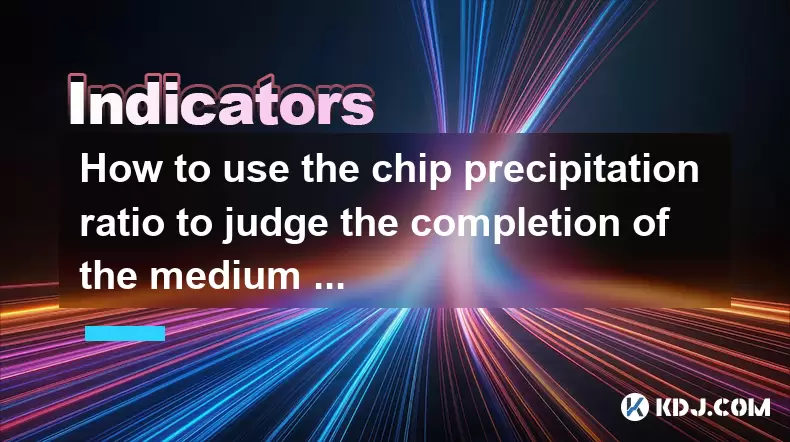
How to use the chip precipitation ratio to judge the completion of the medium and long-term bottom construction?
Jun 04,2025 at 03:36am
The chip precipitation ratio is a crucial metric used by investors to assess the accumulation of chips (or shares) at different price levels over time. This ratio helps in understanding the distribution of chips and can be a powerful tool for determining the completion of medium and long-term bottom construction in the cryptocurrency market. By analyzin...
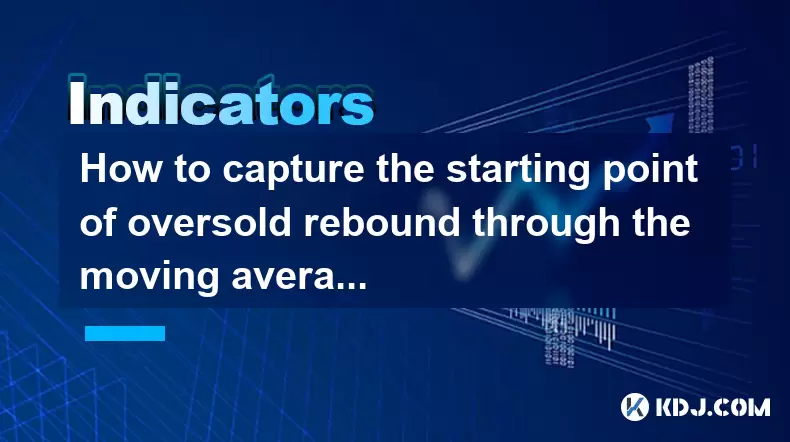
How to capture the starting point of oversold rebound through the moving average gravity reversal strategy?
Jun 04,2025 at 01:01pm
The moving average gravity reversal strategy is a sophisticated approach used by traders to identify potential entry points for buying cryptocurrencies when they are considered oversold. This strategy leverages the concept of moving averages to pinpoint moments when a cryptocurrency might be poised for a rebound. In this article, we will delve into the ...
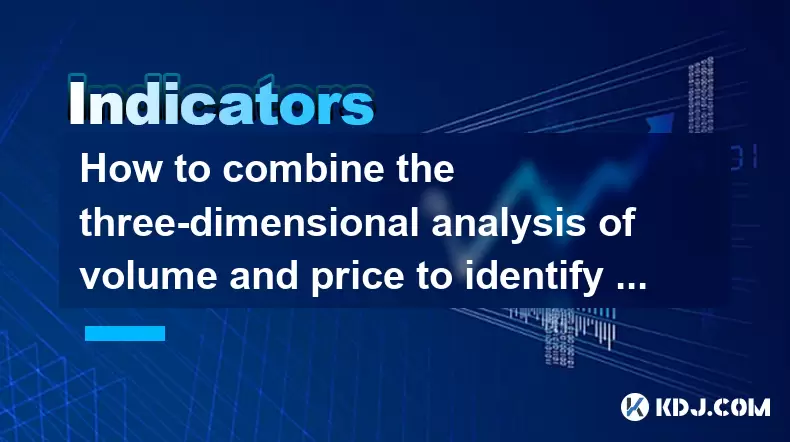
How to combine the three-dimensional analysis of volume and price to identify the golden buying point of breakthrough and retracement?
Jun 03,2025 at 11:42pm
In the dynamic world of cryptocurrencies, identifying the optimal buying points is crucial for maximizing profits and minimizing risks. One effective method to achieve this is by combining three-dimensional analysis of volume and price to pinpoint the golden buying points during breakouts and retracements. This article will delve into how to use this ap...
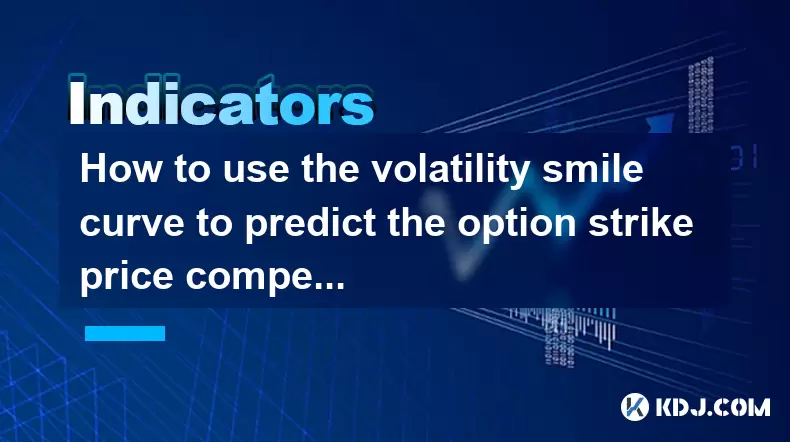
How to use the volatility smile curve to predict the option strike price competition area?
Jun 06,2025 at 01:01pm
The volatility smile curve is a graphical representation that shows the implied volatility of options across different strike prices for a given expiration date. It is called a 'smile' because the curve often takes the shape of a smile, with higher implied volatilities for options that are deep in-the-money or deep out-of-the-money, and lower implied vo...
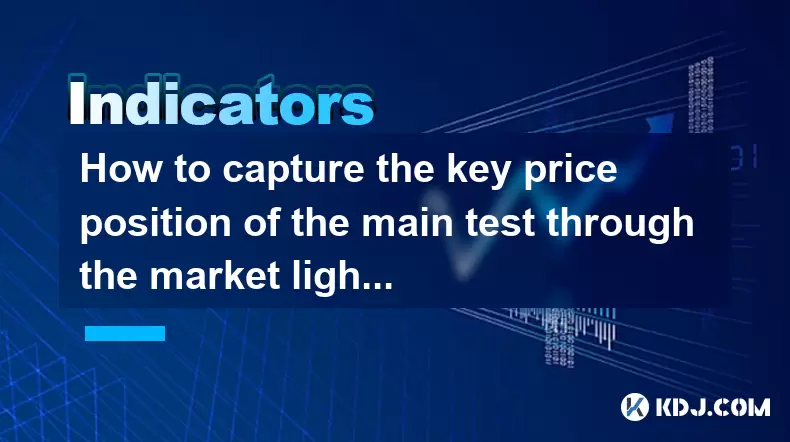
How to capture the key price position of the main test through the market lightning chart?
Jun 02,2025 at 06:07pm
Introduction to Market Lightning ChartThe market lightning chart is a powerful tool used by cryptocurrency traders to visualize price movements and identify key price positions. This chart type provides a detailed view of market activity, allowing traders to spot trends, reversals, and other significant price levels quickly. By understanding how to use ...
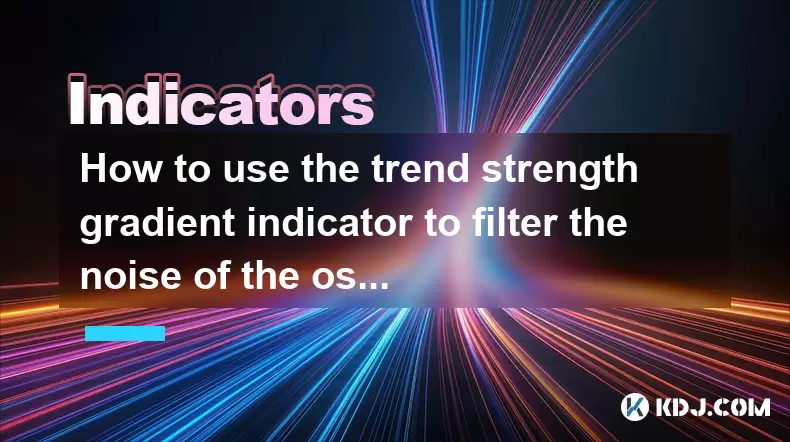
How to use the trend strength gradient indicator to filter the noise of the oscillating market?
Jun 06,2025 at 06:15pm
The trend strength gradient indicator is a powerful tool used by cryptocurrency traders to analyze market trends and filter out the noise that often accompanies oscillating markets. This indicator helps traders identify the strength of a trend, enabling them to make more informed decisions. In this article, we will explore how to effectively use the tre...

How to use the chip precipitation ratio to judge the completion of the medium and long-term bottom construction?
Jun 04,2025 at 03:36am
The chip precipitation ratio is a crucial metric used by investors to assess the accumulation of chips (or shares) at different price levels over time. This ratio helps in understanding the distribution of chips and can be a powerful tool for determining the completion of medium and long-term bottom construction in the cryptocurrency market. By analyzin...

How to capture the starting point of oversold rebound through the moving average gravity reversal strategy?
Jun 04,2025 at 01:01pm
The moving average gravity reversal strategy is a sophisticated approach used by traders to identify potential entry points for buying cryptocurrencies when they are considered oversold. This strategy leverages the concept of moving averages to pinpoint moments when a cryptocurrency might be poised for a rebound. In this article, we will delve into the ...

How to combine the three-dimensional analysis of volume and price to identify the golden buying point of breakthrough and retracement?
Jun 03,2025 at 11:42pm
In the dynamic world of cryptocurrencies, identifying the optimal buying points is crucial for maximizing profits and minimizing risks. One effective method to achieve this is by combining three-dimensional analysis of volume and price to pinpoint the golden buying points during breakouts and retracements. This article will delve into how to use this ap...

How to use the volatility smile curve to predict the option strike price competition area?
Jun 06,2025 at 01:01pm
The volatility smile curve is a graphical representation that shows the implied volatility of options across different strike prices for a given expiration date. It is called a 'smile' because the curve often takes the shape of a smile, with higher implied volatilities for options that are deep in-the-money or deep out-of-the-money, and lower implied vo...

How to capture the key price position of the main test through the market lightning chart?
Jun 02,2025 at 06:07pm
Introduction to Market Lightning ChartThe market lightning chart is a powerful tool used by cryptocurrency traders to visualize price movements and identify key price positions. This chart type provides a detailed view of market activity, allowing traders to spot trends, reversals, and other significant price levels quickly. By understanding how to use ...

How to use the trend strength gradient indicator to filter the noise of the oscillating market?
Jun 06,2025 at 06:15pm
The trend strength gradient indicator is a powerful tool used by cryptocurrency traders to analyze market trends and filter out the noise that often accompanies oscillating markets. This indicator helps traders identify the strength of a trend, enabling them to make more informed decisions. In this article, we will explore how to effectively use the tre...
See all articles

























































































